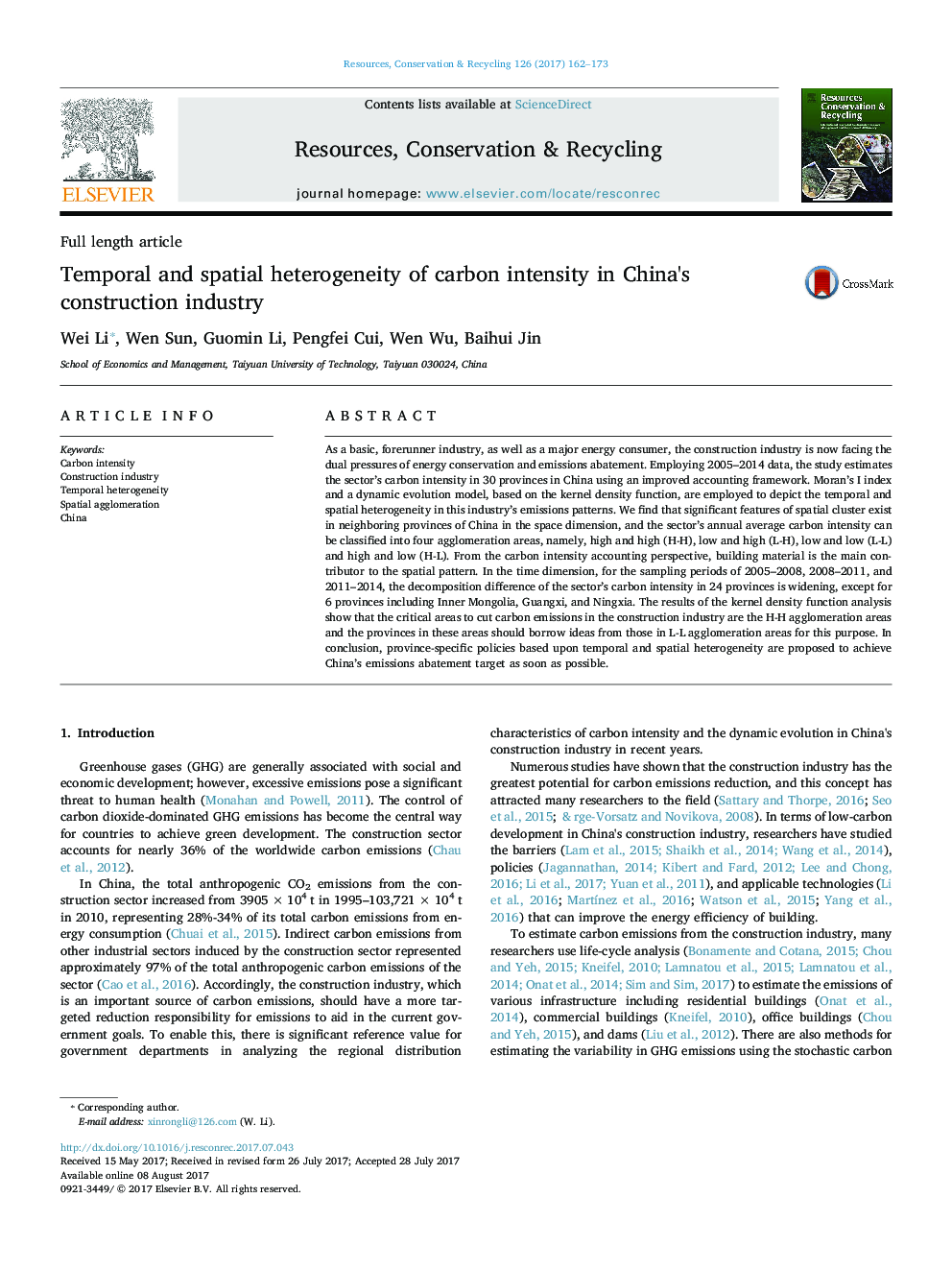| کد مقاله | کد نشریه | سال انتشار | مقاله انگلیسی | نسخه تمام متن |
|---|---|---|---|---|
| 5118632 | 1485666 | 2017 | 12 صفحه PDF | دانلود رایگان |
- China's construction industry's provincial carbon intensity is examined 2005-2014.
- Carbon intensity is assessed in four agglomeration areas, H-H, L-H, L-L, and H-L.
- Building material is the main construction industry carbon intensity contributor.
- H-H agglomeration areas are critical for construction carbon emissions reduction.
- L-L agglomeration areas can provide lessons for the H-H agglomeration ones.
As a basic, forerunner industry, as well as a major energy consumer, the construction industry is now facing the dual pressures of energy conservation and emissions abatement. Employing 2005-2014 data, the study estimates the sector's carbon intensity in 30 provinces in China using an improved accounting framework. Moran's I index and a dynamic evolution model, based on the kernel density function, are employed to depict the temporal and spatial heterogeneity in this industry's emissions patterns. We find that significant features of spatial cluster exist in neighboring provinces of China in the space dimension, and the sector's annual average carbon intensity can be classified into four agglomeration areas, namely, high and high (H-H), low and high (L-H), low and low (L-L) and high and low (H-L). From the carbon intensity accounting perspective, building material is the main contributor to the spatial pattern. In the time dimension, for the sampling periods of 2005-2008, 2008-2011, and 2011-2014, the decomposition difference of the sector's carbon intensity in 24 provinces is widening, except for 6 provinces including Inner Mongolia, Guangxi, and Ningxia. The results of the kernel density function analysis show that the critical areas to cut carbon emissions in the construction industry are the H-H agglomeration areas and the provinces in these areas should borrow ideas from those in L-L agglomeration areas for this purpose. In conclusion, province-specific policies based upon temporal and spatial heterogeneity are proposed to achieve China's emissions abatement target as soon as possible.
Journal: Resources, Conservation and Recycling - Volume 126, November 2017, Pages 162-173
